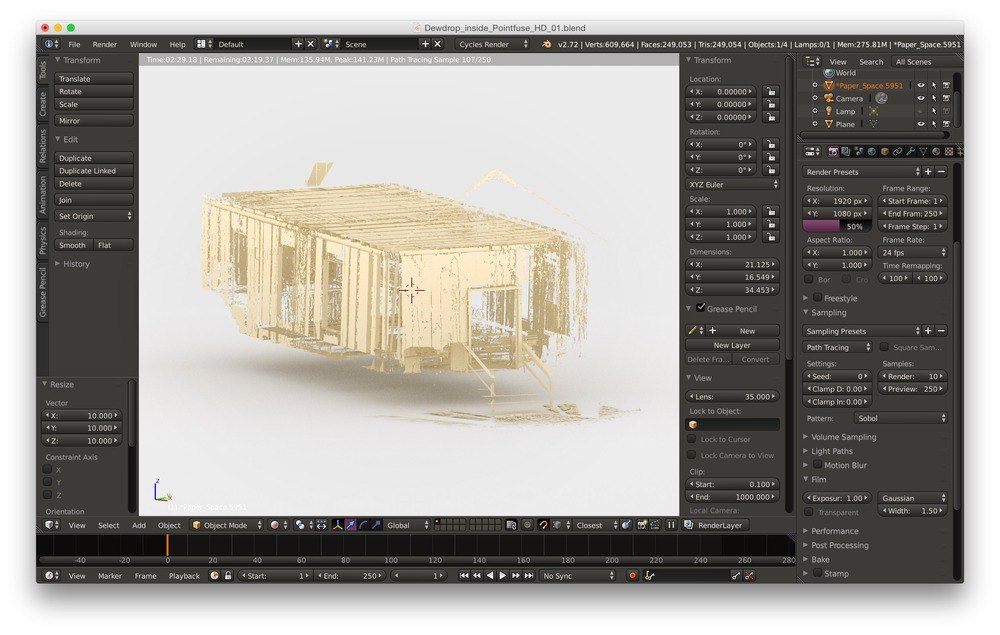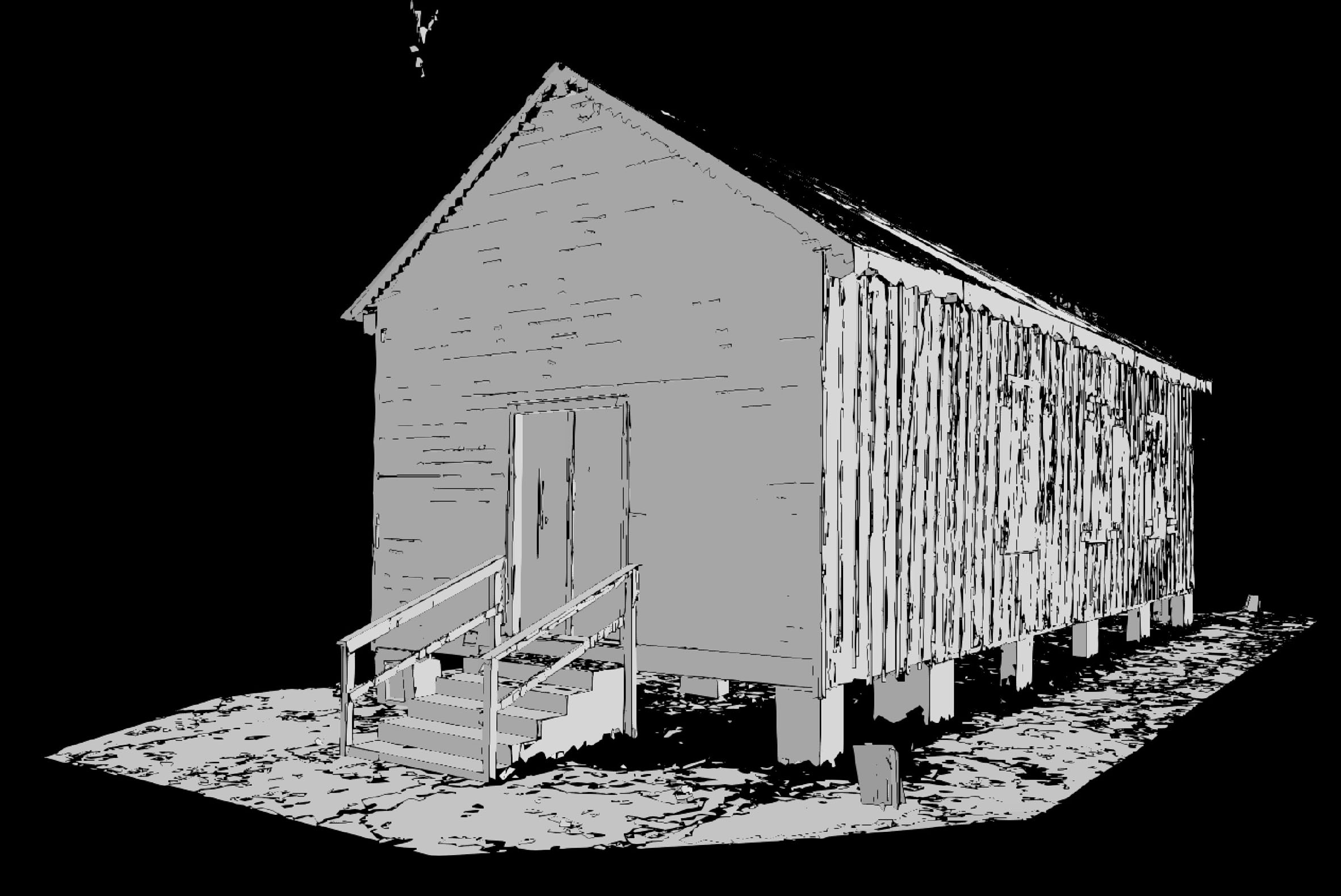Shepperton Studios – Laser scanner modelling software from Arithmetica is helping to preserve some of New Orleans’ oldest and most historically important buildings. Using the Pointfuse point cloud processing software, Scan-Nola, a heritage preservation project is creating detailed 3D computer models directly from laser scanned data. The resulting models provide digital preservation for often derelict or deteriorating structures that can be used for conservation and restoration works, as well as garnering interest and support from the local community.
The first project to be completed by Scan-Nola using the Pointfuse processing software was the production of 3D models of the famous Dew Drop Inn. Located on Lamarque Street in the heart of Old Mandeville, Louisiana, the original small wooden building is considered the world’s oldest, virtually unaltered, rural jazz dance hall. It was built in 1895, which is generally agreed as the year of the birth of traditional jazz in New Orleans.
Scan-Nola undertook the data capture element of the project with collaboration from surveying company Haag & Trammel. Using a Faro Focus X330 laser scanner, a two man team completed 13 scans in total – 9 exterior and 4 interior – within a couple of hours. These scans generated in the region of 12 million individual RGB coloured point measurements. Using Pointfuse, the data was transformed from high density point clouds into detailed DXF files for onward use in free to use, open source, professional computer graphics software, Blender.

“I knew I needed an easy processing workflow to transform the point clouds into models that could be used in animations and virtual reality models. Unfortunately the software we wanted to use was not compatible with the original point cloud files; in fact when we tried to import point clouds it became so slow it was virtually unusable,” said Antoine Cottin, co-founder of Scan-Nola, “So, Pointfuse made the impossible possible! It allowed us to create compatible models with plenty of detail. This also speeded up the processing workflow by at least a factor of a hundred.
“Having tested a number of resolutions two DXF files were created; one of the inside and one of the outside. These files will be used to create clean mesh models in order to optimise their use in animations and for virtual visits,” continued Cottin. “The whole process was quick and easy. In fact one of the hardest parts of the whole process was a result of the fact that the building doesn’t have a single straight wall! However with Pointfuse we can now accurately measure the building’s deformations.”






